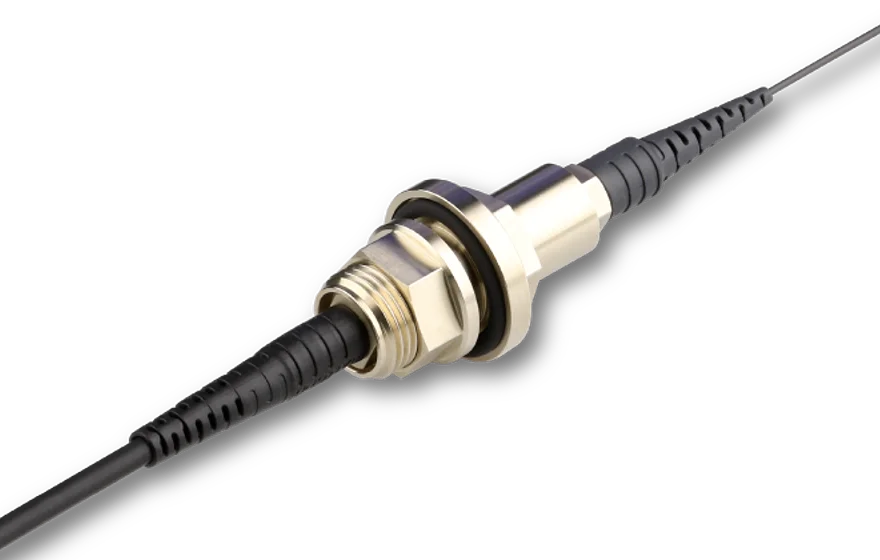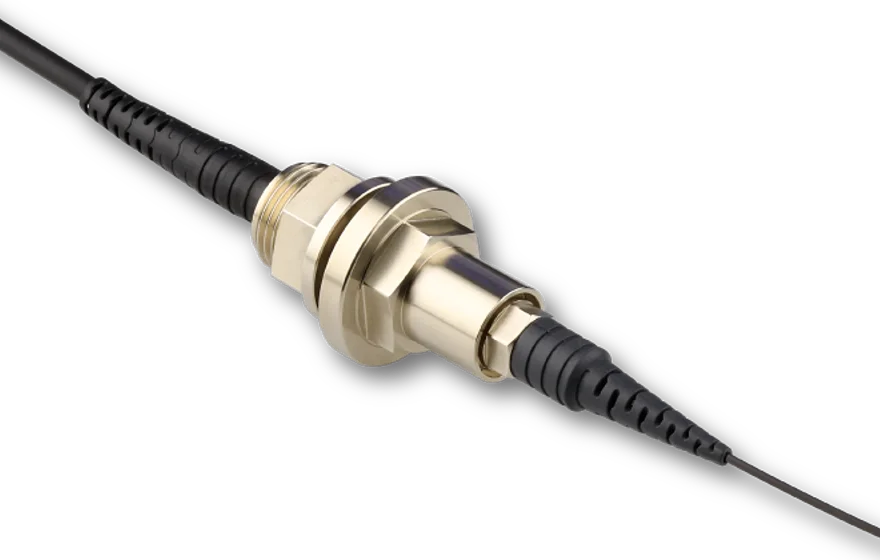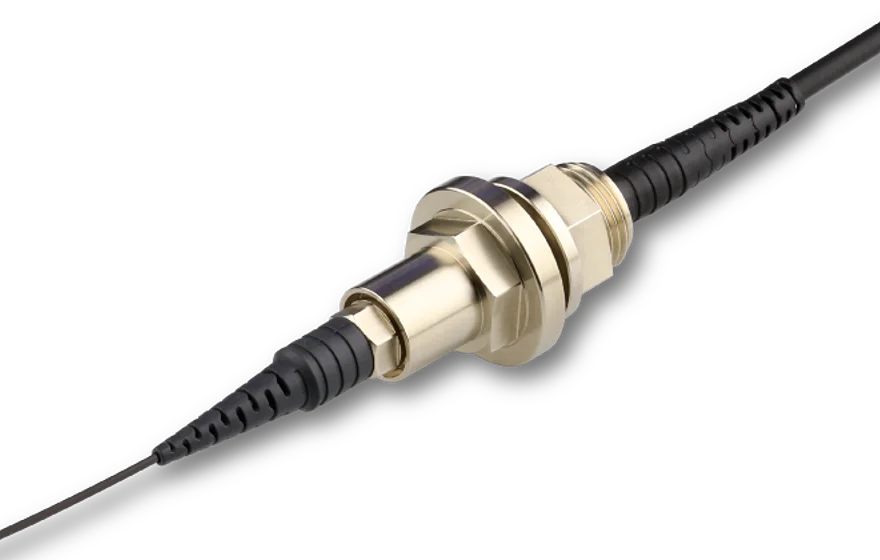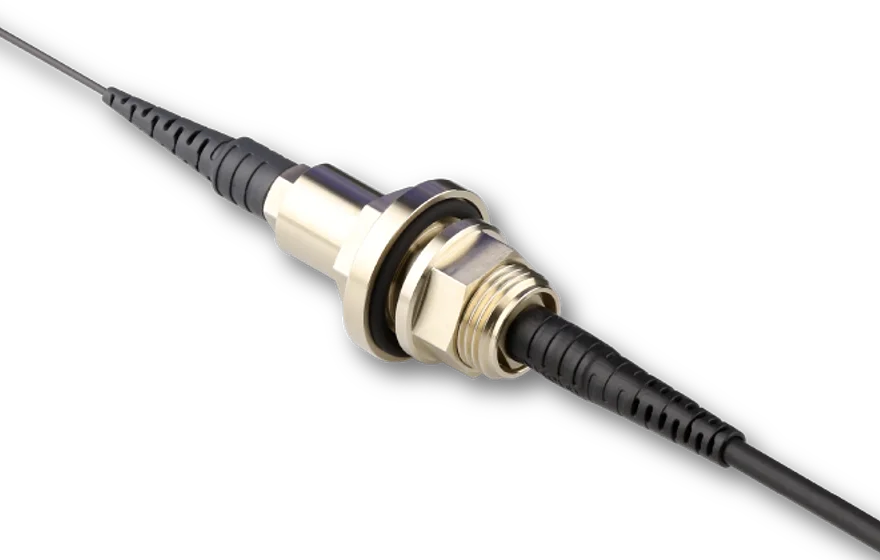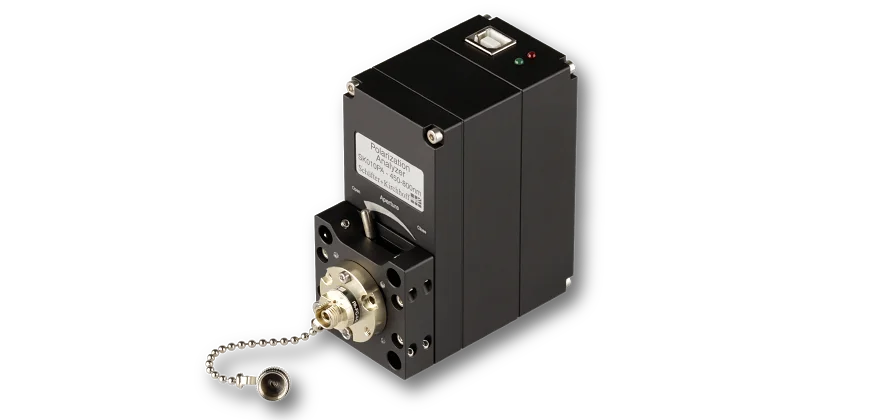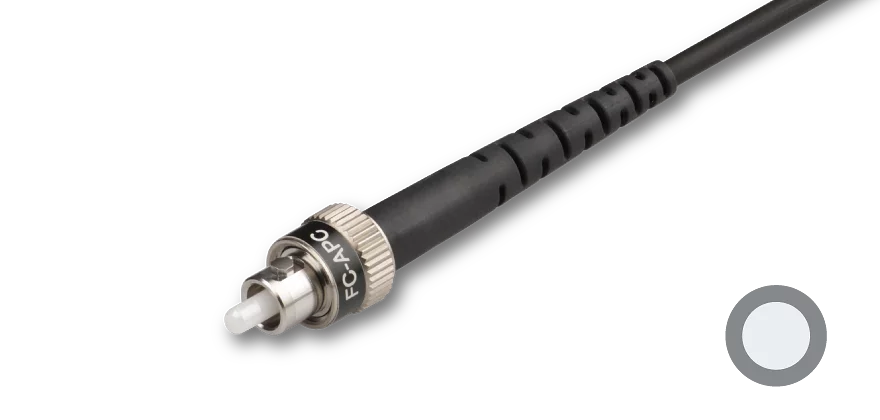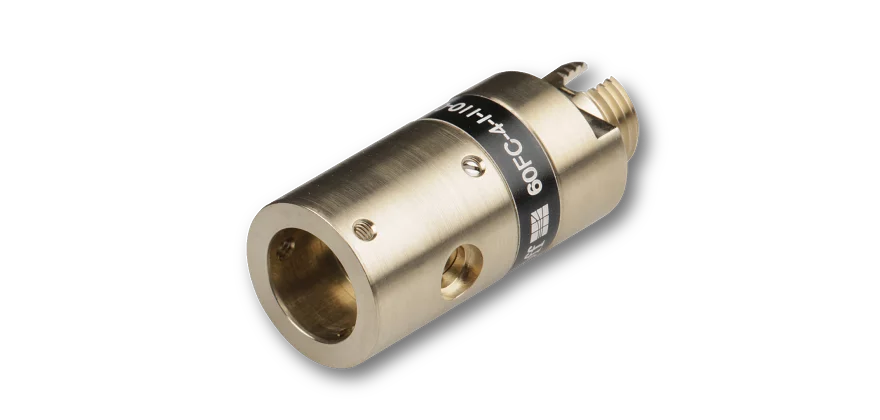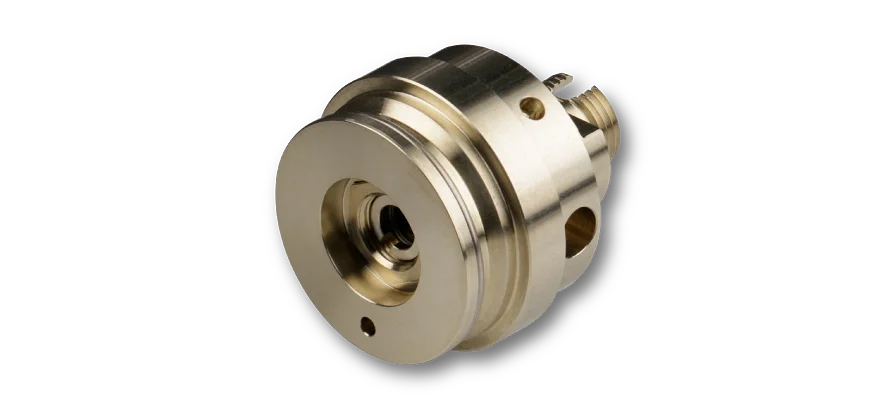Features
Vacuum flange type SF with integrated fiber cable- Screw-type flange M12 x 0.75 mm (nickel silver)
- Suitable for vacuums down to 10-7 mbar
- Integrated multimode fiber cable MMC
- Fiber cables with core diameters Ø 50 µm - 600 µm
- Different connector types
